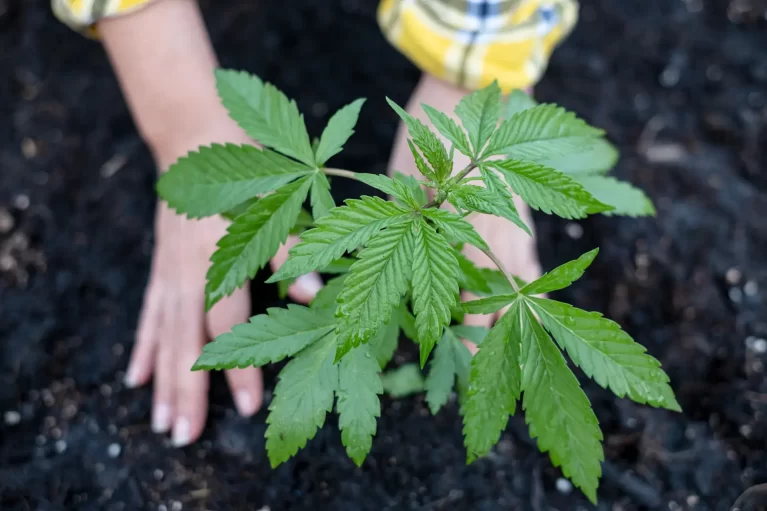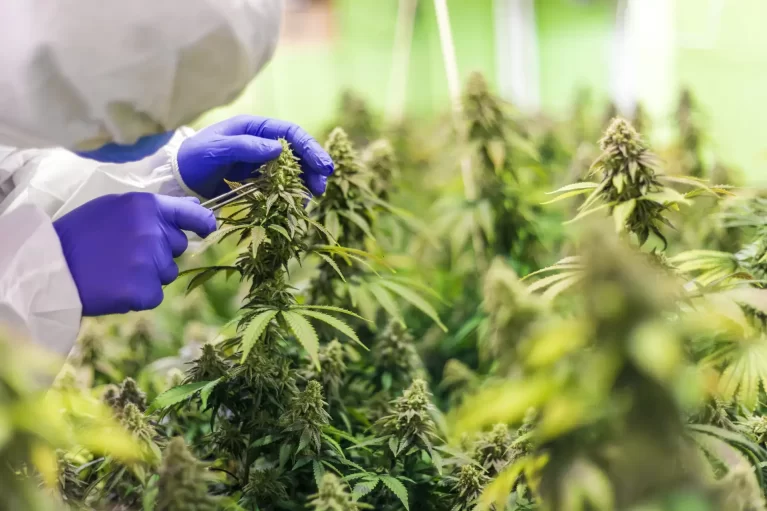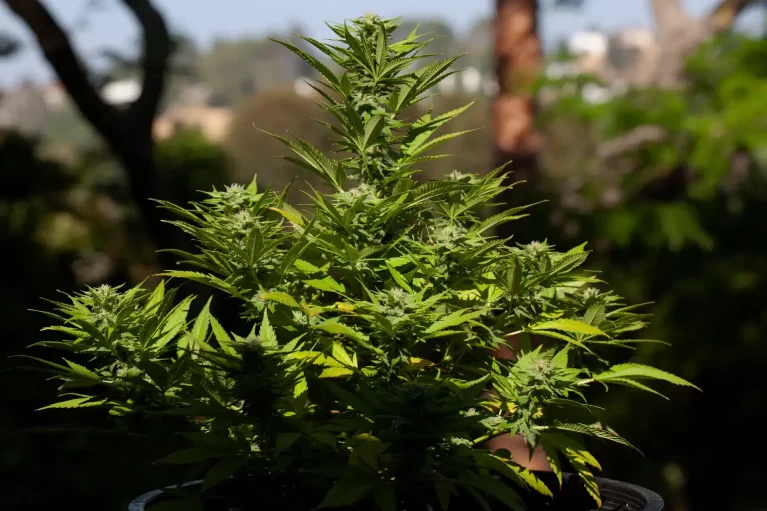When you start the journey of cannabis cultivation, selecting the best cannabis seeds for yield is pivotal. The right strain not only enhances the overall production but also ensures the quality of your harvest. By focusing on genetic traits geared towards high yields, growers can significantly boost their output. To buy cannabis seeds should be approached with careful consideration of strain characteristics, including resistance to pests and diseases, growth patterns, and flowering time. Understanding these aspects can greatly impact your cultivation success, leading to a bountiful harvest.
Top Cannabis Seed Strains for High Yields
Characteristics
Selecting strains known for their high yield is crucial for maximizing your cultivation efforts. High-yield cannabis seeds are typically bred to produce large buds and have robust growth patterns. These strains often exhibit strong resistance to environmental stresses, such as fluctuations in temperature and humidity. Key features include shorter flowering times and vigorous vegetative growth, which support a plentiful harvest. Growers should prioritize these characteristics to ensure that their efforts result in an impressive yield.
Popular High Yield Strains
Among the top cannabis seeds for large harvests, strains like Blue Dream, Northern Lights, and Runtz stand out due to their impressive productivity and ease of growth. Blue Dream, a sativa-dominant hybrid originating from California, is particularly celebrated for its sweet berry aroma and balancing effects that offer relaxation without sedation. This makes it a favorite among those seeking stress relief without a heavy psychoactive impact. Additionally, its resilience to pests and mold contributes to its popularity and large harvests, as it can thrive in diverse climatic conditions ranging from cooler coastal areas to warmer inland spots.

Northern Lights, on the other hand, is an indica strain known for its ease of growth and speedy flowering time, typically ready for harvest after just 6 to 8 weeks of flowering. This strain is ideal for indoor environments, where conditions can be controlled to optimize growth. Its buds are dense and resinous, making it highly desirable for both personal use and commercial production. The effects of Northern Lights are profoundly relaxing, often leading to a sense of peace and sleepiness, and its earthy, sweet flavors enrich the user experience, enhancing its appeal.
The evenly balanced hybrid known as Runtz is one of cannabis’ most famous monarchs. Its phenotypes are numerous and its flavors are practically synonymous with Los Angeles. It comes from a handsome lineage that includes Zkittlez and Gelato strains. While Runtz has a candy type of flavor that inspired its name, the aroma is more focused on pineapple and other tropical fruits. It also has a light skunkiness that is less noticeable in the flavor than the smell. Phelladrene is the dominant terpene in the mix with this strain, followed by an equal amount of Caryophyllene. These two combine to make the fruity and sweet aroma that makes this strain so popular.
Benefits of Feminized Seeds
Using feminized cannabis seeds for yield enhancement is a wise strategy for growers looking to avoid pollination and focus entirely on bud production. Feminized seeds are engineered to produce only female plants, which are the ones that produce buds. This eliminates the risk of male plants pollinating females, which can significantly decrease the overall yield. By choosing feminized seeds, growers can ensure that every plant in their grow space contributes to peak production levels.
Examples of Feminized High Yield Strains
Certain feminized cannabis strains stand out due to their remarkable productivity, making them a prime choice for both commercial and private growers. Among these, Gorilla Breath, Point Break, and Girl Scout Cookies are particularly renowned. Gorilla Breath is an exceptional cannabis strain born from the combination of two world renowned varietals. It exhibits vigorous growth and produces resinous buds, making it a rewarding choice for cultivators. Point Break delivers across the board from its energizing effects to its easy-to-grow nature. It imbues its users with focus and creativity, making it a favorite for those with low-key hobbies that benefit from a little motivation boost.
Girl Scout Cookies is a testament to the exquisite balance of quantity and quality, featuring a rich aroma and a complex flavor profile that includes hints of mint, cherry, and lemon. The popularity of this strain is bolstered by its consistent THC levels that can reach up to 28%, making it a favorite for both medicinal and recreational users. These high-yield feminized strains are not only noteworthy for their volume but also their quality and potency.
Best Practices for Growing Cannabis
Proper Lighting for Indoor Growing
Lighting is one of the most critical components of a high-yield cannabis growing guide. Proper lighting not only influences growth rates and photosynthesis but also affects the potency and flavor of the buds. To optimize your lighting setup, consider the following steps:
- Choose the Right Lights: Selecting the appropriate lighting system is foundational for successful indoor growing. Full-spectrum LEDs are often favored for their efficiency and lower heat emission compared to other types of lights like HPS (High-Pressure Sodium) lamps. LEDs are beneficial because they can be tuned to various light spectrums needed for different growth stages of cannabis—from vegetative to flowering.
- Maintain Proper Distance: The distance between your plants and the grow lights is crucial. If the lights are too close, they may cause heat damage or light burn, which can severely affect plant health. Conversely, if the lights are too far, plants may grow tall and spindly as they stretch towards the light source. Finding the right balance is key to robust plant development.
- Regularly Adjust the Height: As your cannabis plants grow, it’s essential to adjust the height of your lights accordingly. This ensures that your plants remain at an optimal distance from the light throughout their growth cycle, receiving adequate energy without the risk of damage.
- Use Reflectors: Incorporating reflectors in your lighting setup can dramatically increase light efficiency. Reflectors help to distribute the light more evenly across the plants, ensuring that all parts receive sufficient light, which can lead to more uniform growth and development.
- Monitor Light Cycles: It’s imperative to control the light cycles experienced by your cannabis plants. Typically, plants require about 18 hours of light during the vegetative stage and 12 hours during the flowering stage. Using timers can help maintain these cycles rigorously, which is vital for triggering and maintaining the flowering phase, ultimately impacting the yield and quality of your harvest.
Ensuring you have the right equipment, setup, and maintenance routine can make a significant difference in the health and productivity of your indoor cannabis grow. Adjustments and monitoring throughout the growth process are essential for achieving the best possible outcomes.
Nutrient Management
Cannabis plants require different nutrient mixes during their various growth stages. In the vegetative stage, a higher concentration of nitrogen is essential, while during the flowering stage, phosphorus and potassium become more critical. Utilizing quality fertilizers that cater specifically to cannabis will lead to healthier, more productive plants. Regular testing of soil or hydroponic solutions to ensure the correct nutrient levels are maintained is also crucial, as is adjusting these levels based on plant performance and health.
Environmental Control and Temperature Regulation
The ideal temperature for cannabis is between 70-85°F (21-29°C) during the day and slightly cooler at night. Humidity levels should be controlled according to the growth stage—higher during vegetative growth and lower during flowering to prevent mold and mildew. Efficient use of fans and air conditioning units can help stabilize the temperature and circulate air to strengthen plant stems and improve respiration.
Watering Schedules and Techniques
Overwatering can lead to root rot, a common issue that can severely affect plant health and yield. Conversely, under-watering can stress plants, impacting their growth and development. Implementing a consistent watering schedule that adjusts to the life stage of the plant is key. During the vegetative stage, plants typically require more water as they grow rapidly. As they enter the flowering stage, reducing the frequency but increasing the amount per watering can encourage healthier bud development.
Techniques for Maximizing Yield
Topping and Training
Topping is a technique where the top part of the main stem is removed to encourage the plant to grow two main stems instead of one. This not only increases the plant’s bushiness but also the potential for more buds. Training methods, such as Low-Stress Training (LST), involve bending and tying the plants to change their shape and expose more bud sites to light. These practices are essential in a managed indoor environment as they help maximize light exposure to all parts of the plant, significantly increasing the yield optimization in cannabis.
Pruning for Better Light Exposure
This involves removing unnecessary leaves and non-productive parts of the cannabis plant to ensure that energy is focused on bud production. Strategic pruning enhances light penetration and airflow across the plant, which is critical for healthy growth and optimal yield. Removing lower leaves that receive less light helps prevent mold growth.
Soil Selection and Preparation
The soil should be nutrient-rich and well-aerated to support root growth and water absorption. Adding perlite and vermiculite can enhance soil aeration and water retention. It’s also beneficial to adjust the pH of the soil to ensure it is slightly acidic, which is ideal for cannabis plants. Preparing the soil with organic matter, such as compost, can provide a slow release of nutrients which is beneficial throughout the plant’s life cycle.
Pest Management
Effective pest management is critical in maintaining the health of your cannabis crop and ensuring that your yield does not suffer. Prevention is the best approach to pest management, emphasizing the need to create an environment that is unfavorable for pests but ideal for cannabis plants. For a robust pest management strategy, consider the following steps:
- Maintain Cleanliness: The foundation of effective pest management is cleanliness. Regularly removing debris, such as fallen leaves and discarded plant matter, from your grow area minimizes potential habitats for pests. This preventive measure reduces the chances of infestation by eliminating breeding grounds for pests, thereby safeguarding your crop from the outset.
- Use Natural Predators: Beneficial insects like ladybugs, lacewings, and predatory mites naturally prey on common cannabis pests such as aphids, spider mites, and thrips. Introducing these predators into your grow area can help keep pest populations under control without the need for chemical pesticides.
- Implement Barriers: Physical barriers play a crucial role in preventing pests from accessing your grow space. Installing fine mesh screens over air intakes, windows, and other openings can effectively block the entry of insects, while still allowing for ventilation.
- Apply Organic Pesticides: If pests do invade, it’s essential to handle them with care to avoid harming your plants. Organic pesticides, which target specific pests while being safe for cannabis, should be your first line of defense. These pesticides minimize environmental impact and are generally safer for both the plants and consumers of the final product.
- Regular Monitoring: Setting up yellow sticky traps around your grow area is an excellent way to monitor and manage flying insects. These traps not only help in detecting early signs of infestation but also reduce the populations of adult insects, thus interrupting the breeding cycle and helping to control pest levels.
Effective pest management in cannabis cultivation involves a mix of preventative measures, natural solutions, and careful interventions when necessary. Maintaining vigilance and adapting your strategies based on what you observe in your grow area will lead to a healthier crop and more fruitful yields.
Buying Cannabis Seeds
Reputable Cannabis Seed Banks
When deciding to buy cannabis seeds, choosing a reputable cannabis seed bank is paramount. A trusted seed bank like Premium Seed Market not only guarantees high-quality seeds but also ensures that you receive the genetic purity you are promised. We provide detailed profiles for each strain, including information on yield, growth time, and necessary care, which can greatly assist growers in making informed decisions. Moreover, Premium Seed Market offers customer support and growing advice, which can be invaluable, especially for new cultivators.
Remember that the success of your cannabis cultivation lies in the attention to detail and consistency in care. Regularly monitoring your plants’ health, adjusting their environment as needed, and staying informed about the latest cannabis cultivation strategies can make a significant difference in your yield.



